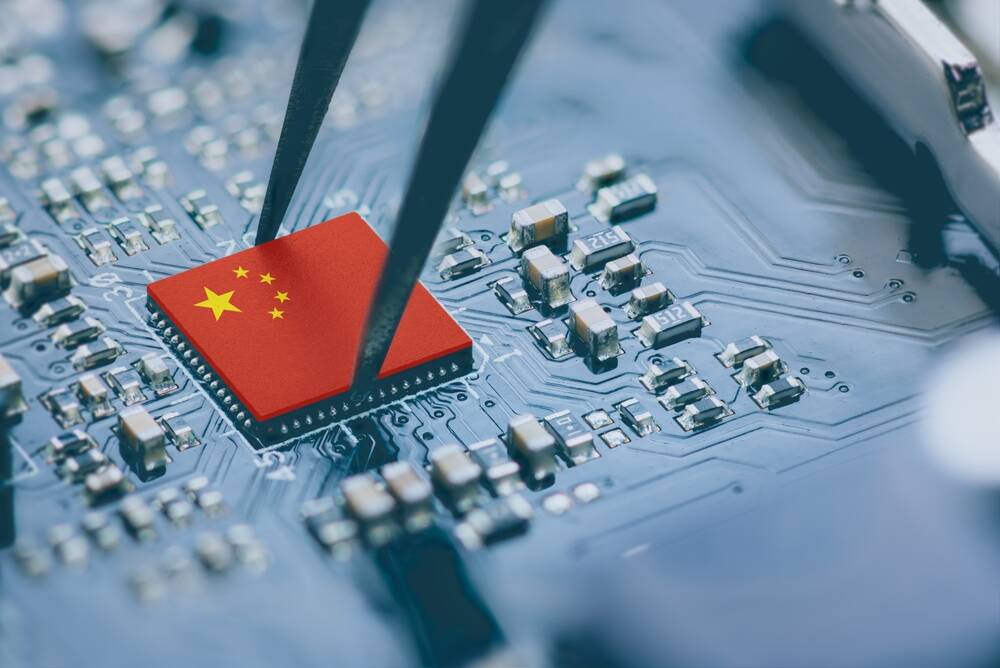China's Memory Maker YMTC Scores $7B To Counter Bans

Embattled memory vendor YMTC is getting a 49 billion yuan ($7 billion) infusion of funds from Chinese state-backed investors in the wake of sweeping trade restrictions against the company by the US and its allies.
Bloomberg reports that approximately 12.9 billion yuan ($1.9 billion) of the money will come from China's semiconductor investment group – better known as the Big Fund. Meanwhile, the South China Morning Post is reporting the chip shop has received another $5.1 billion from Hubei Changsheng Development and Changjiang Industry Investment Group.
Much of China's semiconductor building capacity lags behind Taiwan, South Korea, and the US by at least two years – particularly when it comes to advanced process nodes. But YMTC is seen as a genuine threat to other memory vendors including Samsung, SK hynix, and Micron.
As our sister site Blocks and Files previously reported, YMTC was in the process of developing 232-layer NAND memory that would compete directly with the most advanced modules from Micron, hynix, and Samsung. Even iGiant Apple had reportedly been considering using YMTC memory in some of its products sold in China.
However, YMTC's future was cast into doubt last year after the Biden administration began taking steps to cut off the vendor's access to critical memory manufacturing equipment. The US Commerce Department warned several US semiconductor equipment vendors – including Lam research, Applied Materials, and KLA Corp. – to cease the sale of equipment to Chinese companies. And in October, YMTC was one of 31 Chinese companies placed on the agency's "Unverified List" – effectively barring it from importing controlled US goods.
- China's efforts to influence standards are mostly fake – and flopping
- White House ban on US chip cash going into China ruffles South Koreans
- Chipmakers, you can have these billions – but Uncle Sam wants a cut of your profits
- Semiconductor industry: To Hell with the environment, start building fabs already
At the same time, the US agency formalized restrictions on the export of equipment and software necessary to produce DRAM chips below 18nm, NAND silicon with more than 128 layers, or logic processors below 14nm.
In the months since, the US has put intense pressure on its allies in South Korea, Japan, Taiwan, and the Netherlands to enact similar restrictions on the export of chipmaking equipment and materials to China.
The impact of these sanctions on YMTC is expected to be considerable. Industry watchers at TrendForce projected that as a result of US efforts, the memory vendor would not see supply grow 60 percent year over year as originally thought and would mostly likely decline by seven percent in 2023.
Making matters worse for YMTC, the DRAM and NAND flash market has essentially evaporated in recent months, as declining demand forces lower average selling prices. While this trend isn't unique to the Chinese memory vendor — Samsung, SK hynix, and Micron have all experienced considerable revenue declines in recent quarters — the US sanctions add an additional level of challenge, making the investments in YMTC even more timely. ®
From Chip War To Cloud War: The Next Frontier In Global Tech Competition
The global chip war, characterized by intense competition among nations and corporations for supremacy in semiconductor ... Read more
The High Stakes Of Tech Regulation: Security Risks And Market Dynamics
The influence of tech giants in the global economy continues to grow, raising crucial questions about how to balance sec... Read more
The Tyranny Of Instagram Interiors: Why It's Time To Break Free From Algorithm-Driven Aesthetics
Instagram has become a dominant force in shaping interior design trends, offering a seemingly endless stream of inspirat... Read more
The Data Crunch In AI: Strategies For Sustainability
Exploring solutions to the imminent exhaustion of internet data for AI training.As the artificial intelligence (AI) indu... Read more
Google Abandons Four-Year Effort To Remove Cookies From Chrome Browser
After four years of dedicated effort, Google has decided to abandon its plan to remove third-party cookies from its Chro... Read more
LinkedIn Embraces AI And Gamification To Drive User Engagement And Revenue
In an effort to tackle slowing revenue growth and enhance user engagement, LinkedIn is turning to artificial intelligenc... Read more

